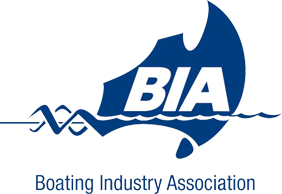Ropes And Halyards Basic Maintenance Tips
26 July 2022A sailboat utilises tons of components so it can cruise through the waters without expecting any issues. One of the components that this marine vessel possesses is the sailing rope.
One of the major ropes that a sailing boat relies on is the sheet. Adept sailors call sailing ropes different names depending on where they are located and attached to. Mainsheets, for instance, are ropes intended for the mainsail. The mainsheet, on the bottom of the boom can adjust the angle of the sail to the wind, which then can also control the boat speed depending on how tight you have the mainsheet. Jib sheets alternatively adjust the jib, and this is done by trimming the sail in or ease it out.
Other types of ropes and halyards found in a sailboat are the main halyard, vang lines, jib halyard, spinnaker halyard, furling line etc. These ropes also require regular maintenance. After all, they are constantly exposed to salt water, dirt, sun, and friction while sailing.
General Maintenance Rules
When maintaining your sailing ropes, there are two rules that you must remember.
First, you must only utilise fresh water. Saltwater should not be used in cleaning your ropes. Strong cleaning chemicals must also not be utilised in cleaning them since they may only damage them. Freshwater, alternatively, can be effective in removing crystallised salt that may form and build up from splashes of seawater.
The second rule you must remember is to clean the sailing ropes with cleaners that have low acidity levels – 8-9 pH values. Cleaners with these pH values are relatively safe for ropes or sheets that have been exposed to various outdoor elements. Now, if you do not have time to determine the pH values of your cleaning product options, you may want to opt for a laundry detergent instead.
Cleaning Sailing Ropes
There are steps that you can follow in cleaning the sailing ropes of your boat.
The first step involves removing the ropes and sorting them based on your preferences can help you install them again to their right places once they have been cleaned. This can be done by mousing the halyard out of the mast and boom with thin string lines. Another handy trick is to take photos of the clutches, so you know where each halyard goes back in, taking note of halyard colour and clutch labels. Any knots must also be untied to prevent crystallised salt and other elements from getting stuck on these loops.
The second step is to remove any damaged ropes. Ropes that show signs of delamination and deterioration must be discarded and replaced immediately to ensure the safety of your vessel.
The best way to clean ropes is to get a bucket and soak the rope in fresh water with some Napisan. To get the best results, let the rope soak overnight. After soaking, rinse the rope with water to remove all Napisan and let the rope dry before re installing.
Ropecoat Stabilises Fibres
One additional maintenance tip you can do with your sailing ropes is to utilise Ropecoat. Ropecoat is a water-based, non-toxic paint product that can stiffen and stabilise fibres in Spectra and Vectran cordage. It can also protect them from wear and sunlight. You can contact us at Riggtech to buy this product.
Optimized by: Netwizard SEO


